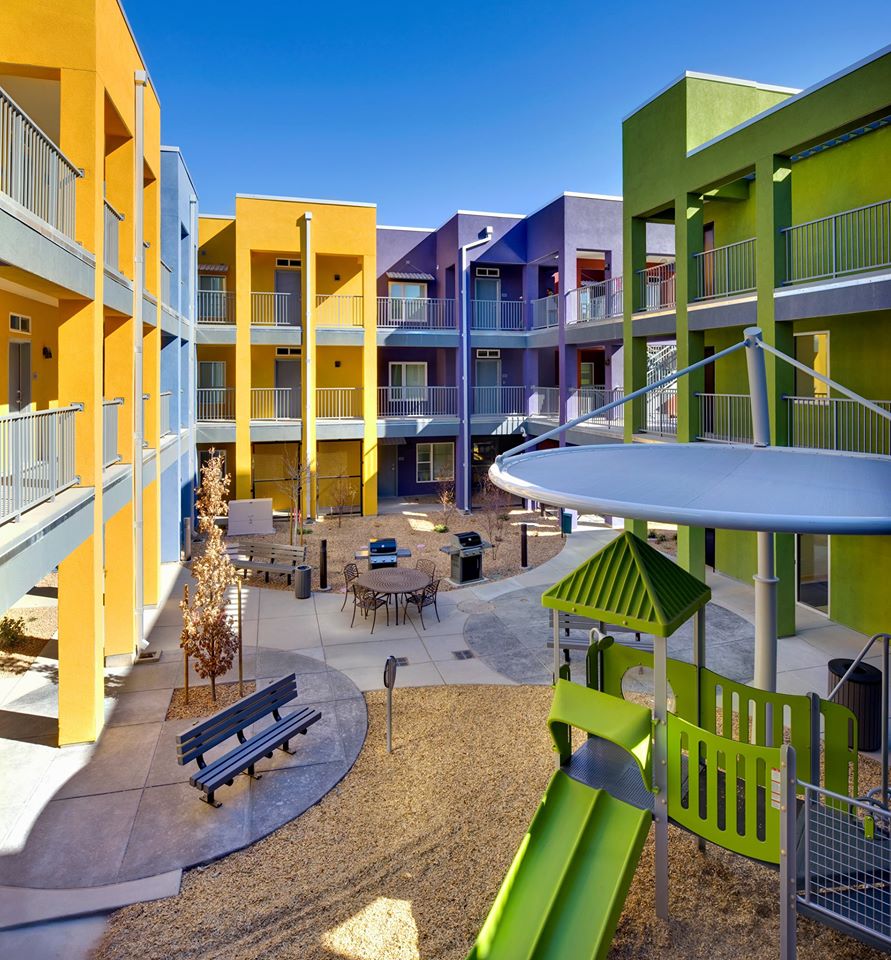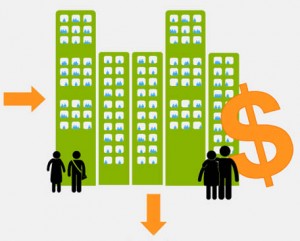Looking for a way to get more involved with the local community? Move for Hunger is a nonprofit that connects you, your residents, and your local food bank. Move for Hunger partners with the American Moving and Storage Association to get nonperishable food into the hands of those in need. Before relocating, residents coordinate with their moving company to deliver unwanted goods to local food banks. To date, the organization has transported more than 11,479, 245 pounds of food to food banks. The donations created 9,566,038 meals for people facing food insecurity. You and your residents can get in on the giving! Arranging a Move for Hunger Donation Setting up a Move for Hunger donation is incredibly simple. First, residents must find a participating professional mover. There are more than 1,000 to choose from across the United States. (And since residents are relocating, anyway, this step is super practical.) The residents and the mover will set up their moving date. While the residents are packing their belongings, they set aside the nonperishable items that they’d like to donate. On the day of the move, the mover will transport the nonperishable food to the nearest local food bank. Benefits for Residents Residents are looking for a way to quickly and easily clean out their unit. Move for Hunger helps them do just that. • All the food that they can’t eat before the move is relocated, rather than tossed in the trash. Donating the unwanted food requires no additional legwork for residents. • The food pick-up may potentially minimize the cost of the move! By donating items in the fridge, pantry, and cabinets there will be fewer boxes to move while residents are being charged. Benefits for You! By promoting Move for Hunger, you’re doing...
Staying Put
Rise in American Immobility
Americans are not moving and no one can pinpoint why. Without a clear cause, the trend is difficult to reverse, as are its effects on the economy and workplace productivity. United States Census Bureau data reveals that only 21.7 percent of renters relocated in 2017. That’s a new historic low. Homeowners moved at a rate of 5.5 percent, a smidgen higher than last year but not enough for analysts to breathe a sigh of relief. Reports from the last three decades depict a decline in relocation for renters and owners. As to be expected, sharp drops occur during economic recessions, yet moving rates have not recuperated since The Great Recession. An article in the New York Times dives into a few reasons why Americans are staying put, caused by—or a result of—an unfavorable employment environment. Every age group, every educational level, and every industry has experienced severe declines in job turnover and employee mobility reports the Federal Reserve Board. In 2017, The US Census Bureau documented that only 9 percent of families relocated due to a new job or job transfer. That’s a sharp decline from 19.4 percent cited in 2013. While analyst Betsey Stevenson of the University of Michigan proposed that people aren’t moving or changing jobs because “they’ve all found jobs that are great for them and they’re happy,” it’s more likely, she admits, that “people stay in jobs that aren’t as good for them because they’re terrified of changing, and that’s bad for the overall economy.” Workers are staying with the same employers and climbing the ladder more slowly than before. Worker fluidity decreased from 10 percent to 15 percent between 1980 and 2013. Those figures are conservative. Some studies place the modern percentage closer to 25 percent. States such as...
Neighborhood Match
Finding a perfect fit
With so many options to choose from, it can be hard for renters to know when they have found the perfect neighborhood to call home. A new portal makes relocation a bit easier by combining ILS, reviews, and neighborhood matching services. Place I Live Portal offers neighborhood matching for those seeking rentals or home ownership in New York City. Rather than identifying homes based solely on price and a predetermined location, Place I Live considers many of the users’ personal preferences and priorities: pedestrian trails, commute times, architectural styles, neighborhood character, and diversity, to name a few. This approach helps users narrow down their search while considering neighborhoods that they may have otherwise overlooked. The system is designed to constantly improve itself. Learning technologies allow the software to increase accuracy with every inquiry that the user makes. And though the app currently features 288 neighborhoods, that number will continue to increase over time. After gathering data on the users’ preferences, Place I Live recommends ten neighborhood options, each with a miniature profile of the neighborhood. Users navigate details on the neighborhoods using a menu that was configured by their previously selected parameters. Standard menu options include a list of amenities, commute options, crime statistics, and community reviews. Though limited now, the reviews feature stands to be a big hit as program popularity grows. Prospects can learn about the community from current and former residents. This key information may increase the comfort levels of remote home seekers, who may not be able to visit the neighborhood before relocating. The menu can also funnel users directly to listing services such as Zillow, RentHop, StreetEasy, and Homes.com. This feature makes it easy for users to keep tabs on vacancies in their favorite neighborhoods. In the future, this...
Making a Move?
5 Great Cities for 2015
Major metros are great, but the U.S. is also home to dynamic second and third-tier cities that offer strong economies, booming job markets and unique local culture. Many of the nation’s smaller metro centers are brimming with business opportunities and the chance to be part of positive change. The Huffington Post recently nominated five such cities as the it travel destinations of 2015: Portland, Ore.; San Antonio, Texas; Raleigh, NC; Albuquerque, NM; and Denver, Colo. Of course, the movers and shakers of the multi-family industry have already taken note, so Portland, San Antonio, Raleigh, Denver and Albuquerque boast excellent apartment communities. Raleigh With over $2 billion in apartment sales and $3.6 billion in commercial sales, according to Colliers International data, it’s no wonder the Research Triangle is a hot place to be. Among the hot new tickets in town is the 216-unit Amelia Station Apartments, which had its grand opening in December 2014. Part of the Drucker & Falk Real Estate portfolio, this luxury apartment community comprises one-, two- and three-bedroom units ranging between 700 and 1,300 square feet. Amenities include a resort style pool complete with poolside entertainment plaza, outdoor grilling pavilion, 24-hout fitness center, 24-hour business center, 24-hour billiards room, children’s playground, leash-free bark park, concierge services and a car wash station. Portland Banking on Portland’s growing popularity, Wood Partners entered a development partnership with Hoyt Properties in late 2012 to develop Block 17, the newest addition to Portland’s LEED-certified Hoyt Yards neighborhood. Set to open in fall/winter 2015 in downtown Portland’s Pearl District, the 281-unit luxury community is steadily rising near the three-acre Fields Park, which will provide ample outdoor green space for future residents. Comprising a 16-story high-rise and a five-story mid-rise and featuring floor-to-ceiling windows, Block 17 will...
A Trendy Infographic
From RentCafe
If you keep an eye on the latest news from the multifamily industry, then you probably already know that apartment renting is the current hot housing option of choice for Americans from all walks of life. The recent recession helped fuel renters’ desires to downsize, cut down on commute times and steer clear of massive mortgages, and the result has been high demand for apartments and low vacancy rates (as well as higher rents). Our friends over at the RentCafe blog, sister site to the apartment leasing service RentCafe, put together this good looking infographic which gives a clear look at who lives in these new renter households, why they’re renting and what these trends mean. The data is clear: the resurgence of renting shows no signs of slowing, and new construction apartment starts are steadily climbing back toward pre-recession levels. The figures are good news for the multifamily industry and could signify a collective shift in our national real estate mindset. What do you think? Will apartment renting stay as popular and trendy as it is today? Or will this be a post-recession reaction that could later reverse? Courtesy of:...





